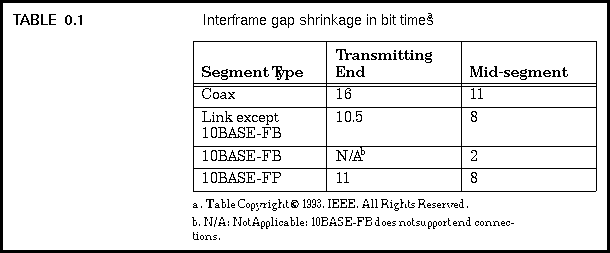
7.5 10-Mbps Configuration Guidelines: Model 2
The network model for checking the interframe gap shrinkage looks a lot like the round trip path delay model, except that it includes a "transmitting end" segment. 
FIGURE 7.5 Network model for interframe gap shrinkage
When doing the calculations for interframe gap shrinkage, only the transmitting end and the middle segments are of interest, since signals on these segments must travel through a repeater to reach the receiving end computer. The final segment connected to the receiving DTE does not contribute any gap shrinkage and is not included in the interframe gap calculations.
The following table provides the values used for calculating interframe gap shrinkage.
In a network where the receive and transmit end segments are not the same media type, you use the end segment with the largest number of shrinkage bit times as the "transmitting end" for the purposes of this calculation. This will provide the worst-case value for interframe gap shrinkage. If the total is less than or equal to 49 bit times, the path passes the shrinkage test.
Generated with CERN WebMaker